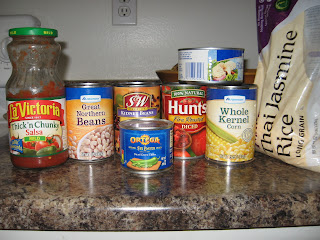Earthquakes are more than just a shaking house. It's the tectonic plates in the earth's crust moving. Some of the plates collide with each other and form mountains, some pull apart and lava seeps through, and some submerge under the other, forming volcanoes. In Southern California, we feel earthquakes that slide back and forth. The San Andreas fault slides sideways. Every time there is an earthquake, we move a little bit closer to San Fransisco. Now that's a scary thought!
The major safety precautions that need to be taken for an earthquake are:
- Anchor your telephone and life support systems.
- Protect head and neck.
- If you are outside, move away from buildings, streetlights, and utility wires.
- If inside, hold on to something sturdy (more on this below). Avoid mirrors and windows, fireplaces, and tall cabinets.
- Prepare for aftershocks.
- If trapped, cover mouth, tap on a wall or a pipe, and don't light a match.
- If in a car, pull over. Avoid overpasses, tall signs, and bridges.
One of the dangerous things that can happen in an earthquakes are that the earth can liquify. There may be a great presence of mud, either from broken pipes or liquifaction. Pipes can break, making tap water unsafe to drink - this is why water storage is so important, even more so than food. There could be landslides. Buildings may be dangerous to enter. Roads may buckle, making it unsafe to drive. There are many more.
If inside, they used to teach us to go under our desks at school. Now they are teaching to go next to your desk. That way, nothing can collapse on your head. It's called the Triangle of Life. It's a pretty easy concept. Look at these pictures:
Sometimes, as a result of an earthquake at sea, we have to be careful of tsunamis. As soon as it is safe to move, go to higher ground. This should honestly be done after any earthquake, especially for those who life very close to the coast. If you are already out of tsunami zone, just stay where you are. Don't add to the traffic panic. Remain where you are for several hours. Sometimes tsunamis have large waves lasting for 10 hours or more. When officials announce it is safe to return to the coast, you may do so.
The most important thing for evacuation to safety is this: know where you are going ahead of time, and be able to reach a safe place by foot. Plan something for family home evening relating to this.





















